The relationship between Open3D version and Ubuntu
Open3D is an open source library that supports rapid development and processing of 3D data. Open3D exposes a set of carefully selected data structures and algorithms in C++ and Python. The backend is highly optimized and is set up for parallelization.
This series of learning plans has Blue students as the initiators, mainly based on the tutorials of the Open3D official website for translation and practice learning plans. The point cloud PCL official account is a free 3D vision and point cloud communication community. We look forward to using Open3D or interested partners to join our translation plan, contribute to the free communication community, and provide Chinese tutorials for using Open3D.
Install open3D on Ubuntu 16.04
After using the command to install Open3D on Ubuntu 16.04, create a ".py" file in Python, and write the code in the file: import open3d as o3d
Errors in running the program at this time:
The error that appears when running in PyCharm is:

When switching to running the code in the created virtual environment, an error occurred:

GLIBC is the low-level thing in the Ubuntu system and cannot be version upgraded [1].
Use the following command to read the version of GLIBC in Ubuntu 16.04: strings /lib/x86_64-linux-gnu/libc.so.6 |grep GLIBC
The following picture shows the version of GLIBC in Ubuntu 16.04:
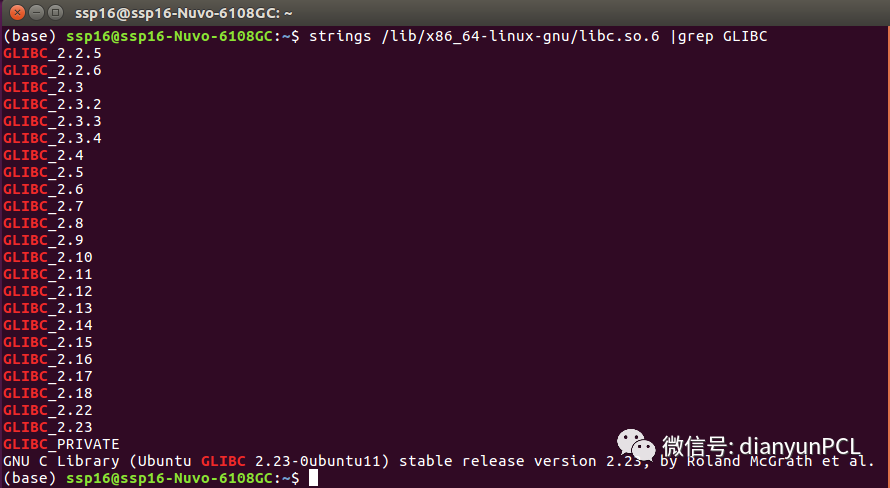
Enter this command to see that the highest version supported in Ubuntu 16.04 is 2.23.
The picture below shows the version of GLIBC in Ubuntu 18.04:
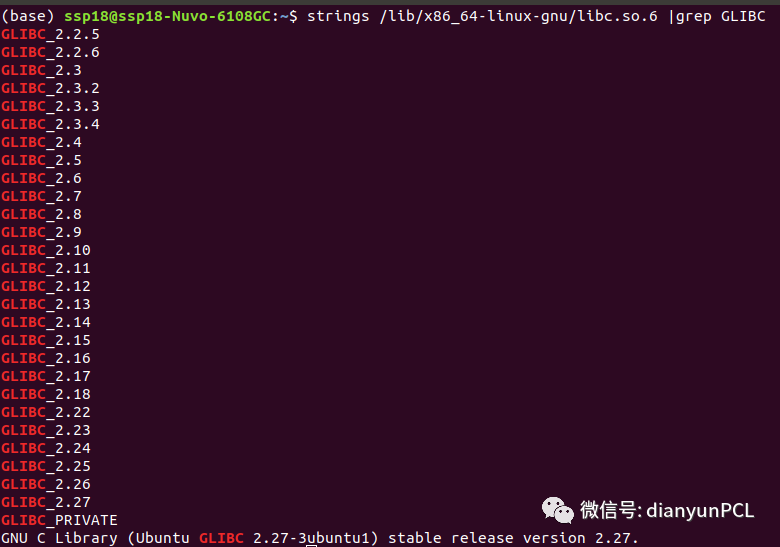
It can be seen from the above information that the versions of GLIBC in Ubuntu 18.04 are 2.24, 2.25, 2.26, and 2.27 compared to Ubuntu 16.04;
The reason for this problem:
The command when installing Open3D is: conda install -c open3d-admin open3d
This command installs Open3D by default, which is the latest version available on the official website. The latest version is: "open3d-0.10.0.0-py36_0". The GLIBC required by the new version is 2.27, as shown in the figure below:
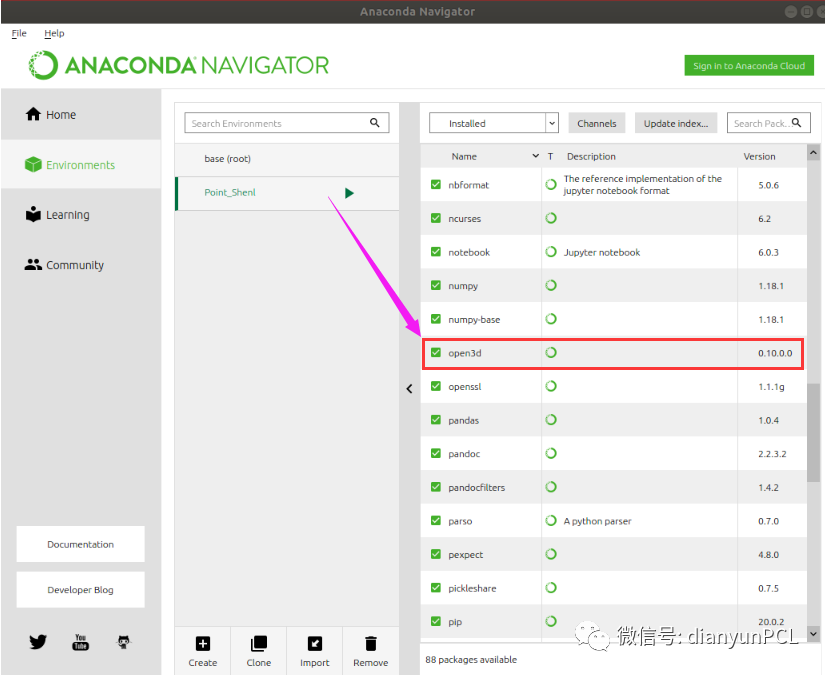
But open3d-0.10.0.0 does not support Ubuntu16.04 but Ubuntu18.04; therefore, although Open3D can be installed on Ubuntu systems, it cannot be used.
If you want to use the open3d library correctly in the Ubuntu 16.04 environment, there are two ways to think of:
j. Upgrade Ubuntu16.04 to Ubuntu18.04, and then install the corresponding software package;
k. Download the open3d-0.9.0.0 version on the official website, and use the terminal provided by Anaconda to install this feature pack.
Method 1: It can meet the staff who do not have a strong demand for Ubuntu16.04;
Method 2: Continue to use without changing the Ubuntu version environment;
(1)、 Uninstall Open3D package command:
conda remove open3d
(2)、 Download Open3D official website address
Official website: https://anaconda.org/open3d-admin/open3d
It is recommended to download the Open3D software package version on the official website: open3d-0.9.0.0-py36_0;
(3)、 Anaconda starts graphically in the Ubuntu environment
First switch the terminal to the corresponding virtual environment;
Enter the corresponding command:
source ~/anaconda3/bin/activate root
anaconda-navigator
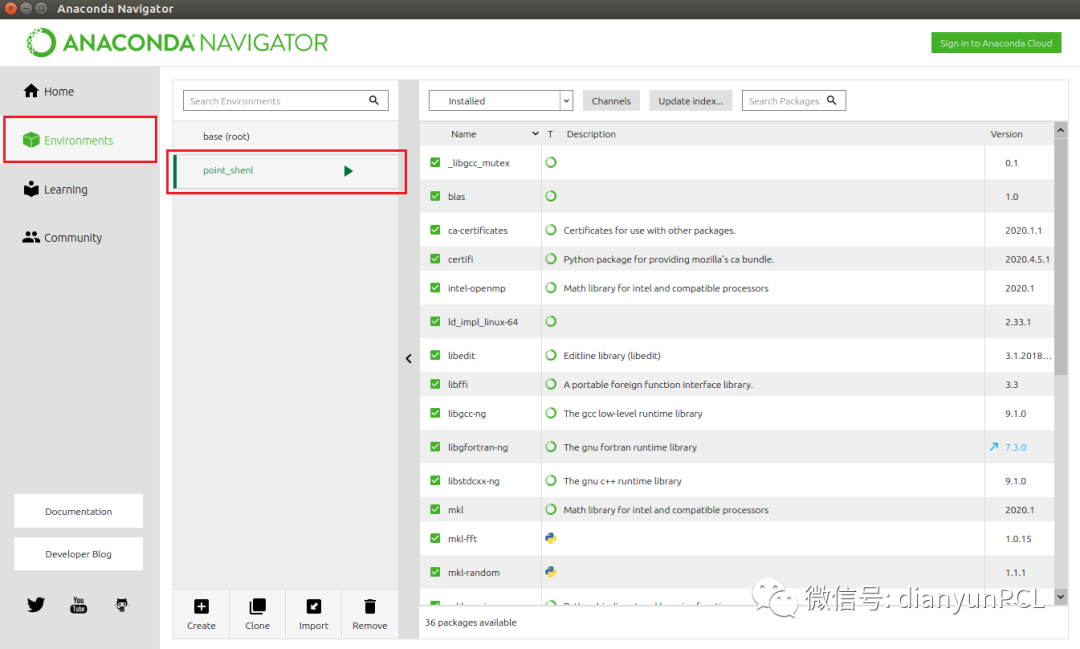
(4)、 Installed locally in the virtual environment
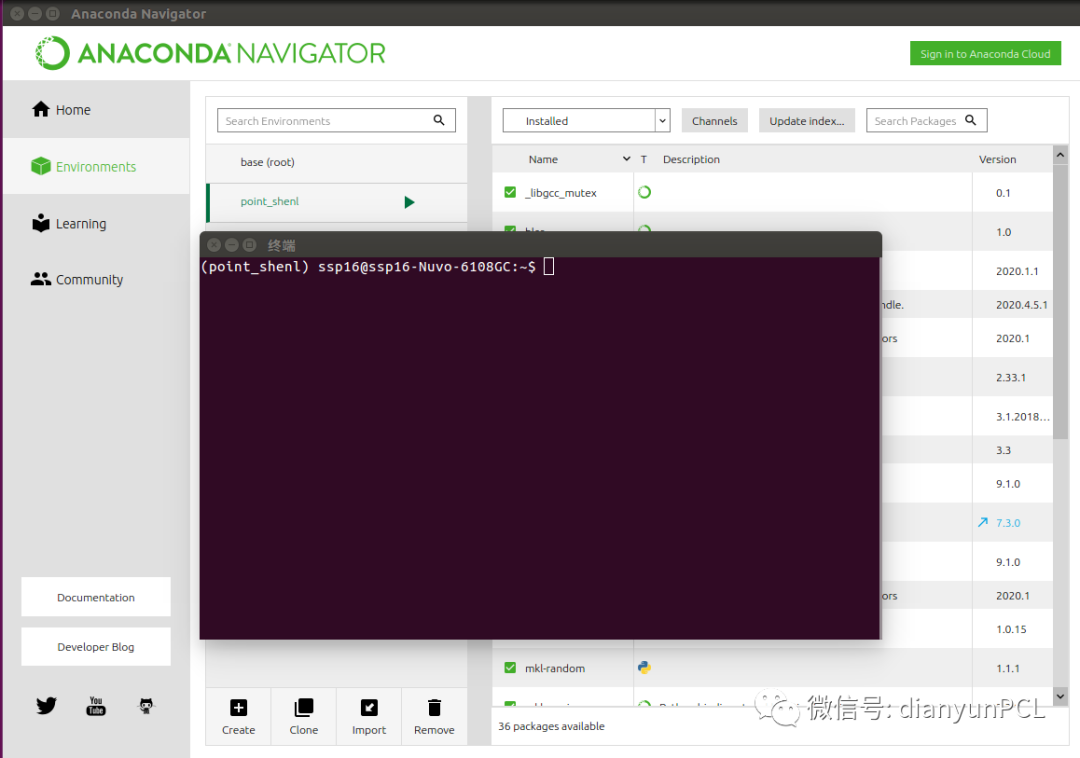
Install the locally downloaded Open3d software package: The command format entered in the terminal:
conda install absolute path/package name of the location of the package
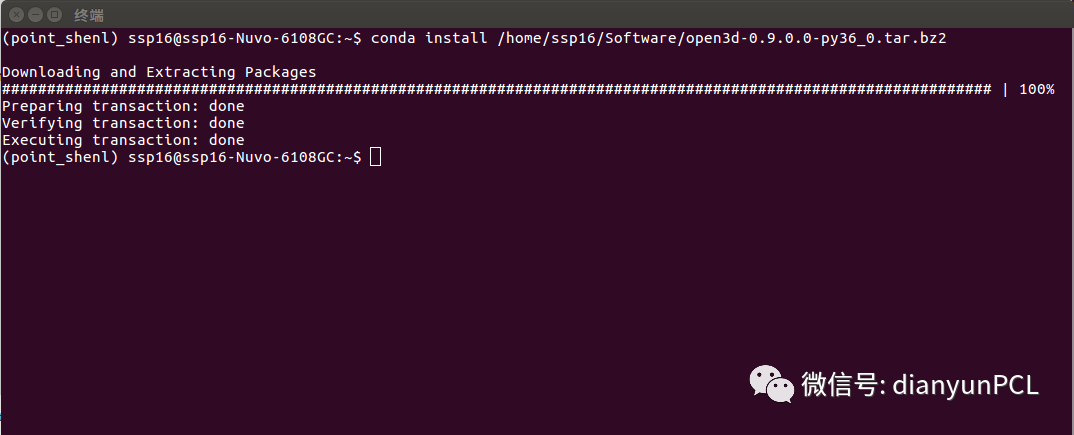
The picture shows the terminal brought by Anaconda
At this time, switch the terminal to the corresponding virtual environment. As shown below:

The reason why the program cannot run normally is that the library ipywidgets associated with Open3D was uninstalled together during uninstallation, and needs to be reinstalled.
Commands executed in the terminal:
conda install ipywidgets
So far this problem has been solved.
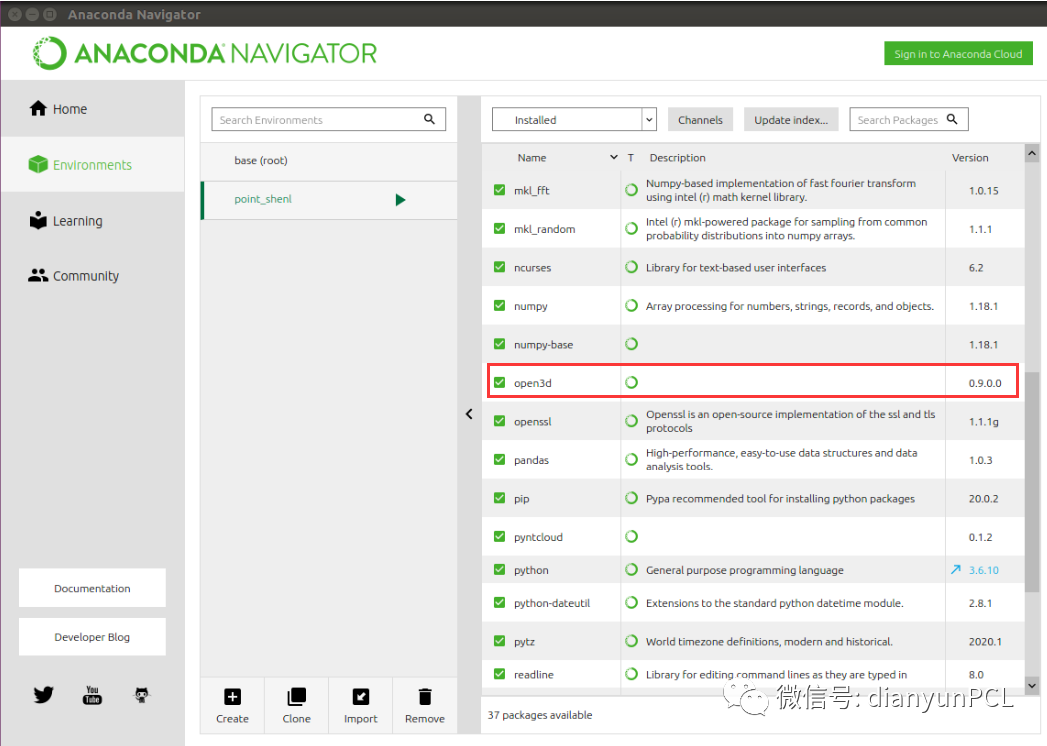
[1] https://www.cnblogs.com/kevingrace/p/8744417.html
Recommended Posts